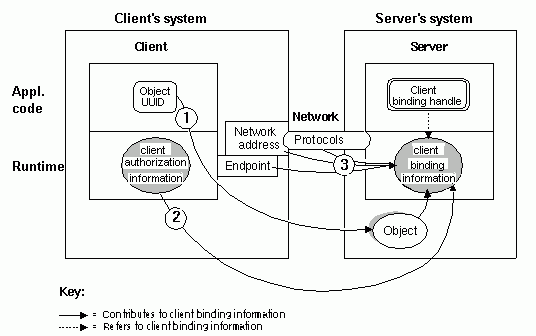
When making a remote procedure call, the client runtime provides information about the client to the server runtime. This information, known as client binding information, includes the following information:
· The address where the call originated (network address and endpoint)
· The RPC protocol used by the client for the call
· The object UUID that a client requests
· The client authentication information (if present)
The server runtime maintains the client binding information and makes it available to the server application by a client binding handle. The following figure illustrates the relationships between what a client supplies when establishing a binding and the corresponding client binding information.
Client Binding Information Resulting from a Remote Procedure Call

The callouts in the figure refer to the following:
1. The requested object UUID, which may be the nil UUID
2. Client authentication information, which is optional
3. The address from which the client is making the remote procedure call, which the communications protocols supply to the server
A server application can use the client binding handle to ask the RPC runtime about the object UUID requested by a client or about the client's authentication information.